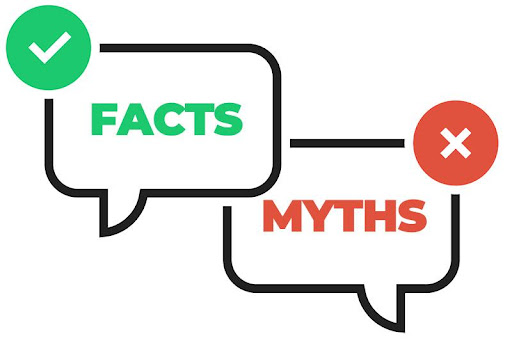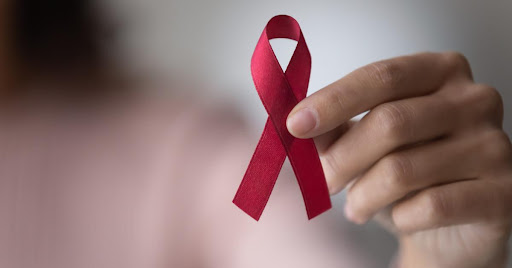
Introduction
AIDS is an autoimmune disorder that attacks the immune system of the body and makes it more prone to various infections. The virus which causes AIDS is called HIV or Human Immune Virus. Since the most common way of transmission of HIV from an infected person to a healthy being is through unprotected sexual intercourse, the disease is surrounded by a bulk of stigma. In countries like Pakistan which majorly lacks sex education or any discussion around reproductive health and well-being, the stigma around the disease strengthens. This conceals the actual information about the disease and propagates false myths.

There are many myths about HIV and AIDS all around the globe which hinders its diagnosis and timely treatment. Since the carriers of the virus are embarrassed about the disease, they tend to hide it from their partners which leads to the further transmission of the disease.
In the following blog, you will get to know about the common myths about HIV and AIDS and will learn what the facts are.
Common myths around HIV/AIDS
Following are some common myths, rumors, and misconceptions about HIV/AIDS followed by the facts.
Myth 1: HIV can spread with casual contact
Fact:
The only means by which HIV can transmit is through blood, semen, vaginal secretions, and breast milk. People usually come in contact with the above stated fluids through unprotected sexual intercourse and by using unsterilized needles and syringes. The less commonly known way of transmission is from the mother to a baby during pregnancy or via breast milk.
Myth 2: Getting an HIV diagnosis is equivalent to a death sentence
Fact:
In the past when medicine, science, and technology were not that advanced, getting diagnosed with HIV used to be taken as a death sentence. However, with the current advancements in technology and medicine, new and improved drugs for HIV are present in the market which can significantly improve the lives of patients with HIV. With regular intake of medication and taking good care of health, one can lead a long and healthy life.
Myth 3: HIV is treatable
Fact:
Even with the advancements in technology, there is still unfortunately no cure for HIV yet. Some research suggests that bone-marrow transplant might be the potential cure for HIV, however, more research is required. Since there is no cure, continued treatment and medication for HIV are required.

Myth 4: AIDS medication is more hazardous than the disease itself
Fact:
There is unfortunately no cure for HIV but the medication, commonly called antiretroviral medication, helps in maintaining a healthy life for many. Research shows that antiretroviral therapy has helped in decreasing the death rates of people with AIDS. With increasing advancements in medicine, newly developed medicine has lesser and lesser side effects.
Myth 5: It is fine to stop the treatment if you feel well
Fact:
Since HIV medications have their side effects, people tend to stop the treatment once they start to feel well. Understandably, taking medications every day without any break for the rest of your life can be overwhelming, however, one cannot stop the treatment thinking that now they are feeling well and don’t need any medicine. Stopping medicines can result in various adverse ways. It can either give HIV a chance to form a resistance against your HIV drugs and thus the drugs will lose their ability to fight the virus. Or it can give the virus time to strengthen itself and increase the viral load inside your body. This will cause additional harm to your immune system by dropping the CD4 cell count.
Myth 6: People with HIV or AIDS are visibly sick
Fact:
In most cases, individuals with HIV have a normal-looking outlook and they don’t appear any different. Such people often don’t even feel sick and thus don’t know if they are unwell or have the virus. The only way to unveil if an individual has HIV is to take a test.

Myth 7: Heterosexual or straight people cannot get HIV
Fact:
Statistics show that the highest number of people affected by HIV are straight or heterosexual. Men and women can transmit the disease to each other and among each other meaning that sexuality has nothing to do with the transmission. HIV can be transmitted via blood, semen, and vaginal fluids regardless of gender.
Myth 8: People in monogamous relationships cannot get HIV
Fact:
Since HIV doesn’t have any visible signs or symptoms and it doesn’t make you look sick, there is no way to tell if your partner has it or not. This is why even engaging in unprotected sex with even just one partner makes you susceptible to catching HIV and AIDS. Even people in a faithful monogamous relationship are at risk of catching HIV if they use shared needles or equipment for drugs. This is why it is important that your love, commitment, and emotions are not influencing your decisions for safety against HIV.
If a person having a formal possible exposure to HIV remains monogamous and is tested negative for HIV after three months of the exposure, the person can safely have unprotected sex.
Myth 9: Older people cannot get HIV
Fact:
Unfortunately, HIV shows no mercy on the elderly. Statistics show that there are around 4.2 million adults aged above 50 living with HIV around the globe. These numbers are subjected to increase as older people are not much aware about the disease since back in the day there was not much discussion around the topic and the awareness sessions conducted now are more focused on the youth.
Myth 10: People on birth control cannot get HIV
Fact:
Most birth control methods are designed to prevent possible pregnancies. These methods don’t protect against STDs (sexually transmitted diseases) or STIs (sexually transmitted infections). The only birth control method effective in controlling STIs like HIV and AIDS is condoms.
Myth 11: People with HIV cannot have normal children
Fact:
Women who have HIV and are willing to have children should mainly focus on starting their ART treatment promptly. Owing to the advancements in science and technology, HIV-positive women can also birth healthy children if they ensure regular and proper medication throughout their pregnancy. Special care and medical interventions are required during labor and delivery. Medicating the newborn for 4 to 6 weeks after birth is also essential to reduce the risk of transmission of HIV to the baby to 1%.
Regular testing for loads of HIV must be ensured throughout and if the viral load is higher at the time of birth or after birth then the mother should opt for C-section or formula feeding to the child. The HIV status of the father-to-be is also important. If the woman herself is HIV negative but her partner is positive, then extra care is required as well as both the woman and child are at risk. Males with undetectable viral loads and on ART treatment almost have zero risk of transmitting their infection to the child.

Myth 12: HIV always develops to form AIDS
Fact:
It is important to remember that AIDS and HIV are not the same and AIDS is not the only disease caused by HIV. If HIV is not treated timely, it might develop into AIDS but if the infected person starts their treatment in the early stages and continue the treatment then the infection might not develop to form AIDS. Continued treatment can enable people with HIV to lead a near-to-normal life without ever getting AIDS.
Myth 13: Taking HIV medication prevents its transmission via sex
Fact:
HIV treatment doesn’t guarantee the prevention of transmission of HIV via unprotected sex. However, continued treatment might lower the levels of the virus in your blood so much so that it is labeled as undetected. At this point, it is theoretically safe to practice unprotected sex. However, it is important to note that there are a lot of risk factors involved, the biggest being the risk of infecting your partner. Since your immunity is already compromised due to the infections of HIV, you are more susceptible to other STDs. Unprotected sex also increases the risk of one getting other strains of HIV.
The adverse effects of HIV and AIDS myths
Myths about any disease or healthcare problem are very dangerous as they put potential risks to communities and hinder proper treatment. There are many atrocious effects of the myths which exist around HIV and AIDS. The most adverse effect of such myths is the solidification of the taboos surrounding the disease. The myths about the transmission of the disease can unfold in two ways. Either people accuse patients with HIV infections of unethical sexual relationships thinking that AIDS and HIV can only transmit through the sexual route. Or isolate the diseased individuals thinking that HIV can spread through casual contact. In both cases, the patients and their loved ones suffer. This can lead to broken relationships and marriages leading to mental trauma and depression to people.
The myths also frustrate the efficacy of the treatment of HIV which can also make the investment of both money and time go to waste.



